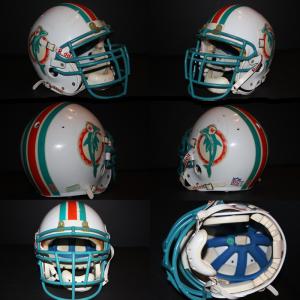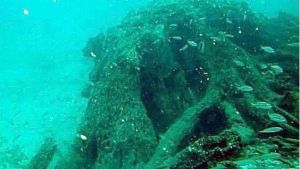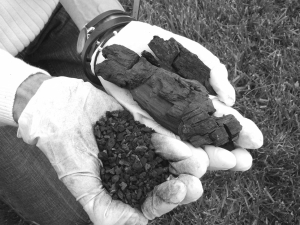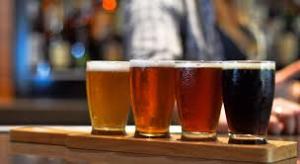LAB REPORT
Science and Technology Making Headlines
July 7, 2017


Lawrence Livermore and Autodesk researchers are working to make safer sports helmets.
A head start for safer sports
Football is a dangerous sport: It’s fast-paced and high-impact, and protective gear can only do so much, as repeated tragedies involving traumatic brain injuries have shown. But technology, and 3D printing, show promising potential for reducing the number and severity of head injuries suffered in sports like football.
Researchers at Lawrence Livermore National Laboratory and Autodesk are redesigning helmets and other sports equipment to be smarter and safer using complex micro-architectures.
With the surprising reality that players are experiencing an increased amount of concussions, the researchers are putting considerable effort into new materials meant to protect the cerebellum. The teams have been examining how they can construct better helmets and other equipment, using metal 3D printing with materials that can adjust to the load they are experiencing and then revert to their original shape.


Fish swim through an ancient forest found 60 feet under water about 10 miles offshore from Mobile, Alabama. Photo courtesy of Ben Raines.
Seeing the forest through the sea
Off the coast of Alabama lies an underwater forest peeking out of the sediment 60 feet below the surface.
Turns out the cypress trees are a prehistoric time capsule of the coastline and its climate during a 1,000-year period, when sea levels were much lower and much of the continent was hidden beneath a one-mile-thick sheet of ice.
The research team turned to Lawrence Livermore to date the chunks of wood using radiocarbon dating.
The expectation, researchers said, was that the trees would end up being around 10,000 years old. Nobody expected to find out that the trees were about five times that age: 50,000 years old.


An artist's illustration of an asteroid heading toward Earth. Photo courtesy of ESA - P. Carril
Faster than a speeding bullet
While the chance of a devastating event like the 2013 Chelyabinsk meteor blast may be rare, millions of objects are known to be floating through space, and scientists warn a collision is bound to happen sooner or later.
To stay on top of the risk, NASA researchers are creating 3D supercomputer simulations that could help first responders prepare for how an asteroid might behave once it crosses through Earth’s atmosphere.
As a part of the effort, the researchers ran large-scale simulations of a Chelyabinsk-like asteroid, revealing the dramatic 45,000 miles-per-hour fluid flow that takes place as the space rock melts and vaporizes on its journey toward the surface.
Using NASA’s Cart3D and Lawrence Livermore National Lab’s ALE3D modeling software, the researchers could create a multitude of impact scenarios.


Lawrence Livermore researchers are using biochar, a porous charcoal that looks like black landscaping bark, to limit the cesium-137 uptake into foods grown in the Marshall Islands.
New research chars the soil
Charcoal is just not for barbecuing.
Lawrence Livermore researchers have conducted a series of laboratory and field experiments that explore the effects of adding biochar, a porous charcoal that looks like black landscaping bark, to the soil to limit the cesium (Cs) uptake into foods grown in the Marshall Islands.
From 1946 to 1958, the United States tested 67 nuclear weapons at Bikini and Enewetak Atolls in the northern Marshall Islands. As a result, the radioactive fallout contaminated the area.
LLNL scientists continue to provide radiological protection monitoring of local inhabitants and the environment in the Marshall Islands. Key program research focuses on building a strong technical and scientific foundation to help support safe and sustainable resettlement programs and improving food safety and security.
To stop the transfer of cesium-137 (a fission product from the nuclear tests) into the food chain, the team added biochar to soil on the islands to help reduce the soil-to-plant uptake.


Lawrence Livermore researchers have developed a technique to capture carbon that may help breweries save money and curb carbon emissions.
Crafting a new way to capture carbon
A technology developed at Lawrence Livermore for improving carbon capture at power plants may be able to help craft breweries capture and reuse CO2 from their fermentation processes, while also slashing costs.
Breweries produce three times as much CO2 as they need for use in carbonation and bottling, just through the natural process of fermentation, and while larger breweries may be able to afford the purchase of CO2 reclamation systems, craft breweries often aren't in the position to do so. And just because a brewery captures the CO2 from fermentation doesn't mean that it recycles it into the final product.
If breweries could capture and reuse some of their CO2 for use in carbonation and packaging and then sell the rest to other industries, they could be operating a self-sustaining CO2 cycle while also profiting from their excess carbon dioxide emissions. That's where the carbon capture technology from LLNL comes into play because it enables an efficient and eco-friendly CO2 reclamation process based on a common and low-cost material -- baking soda.





